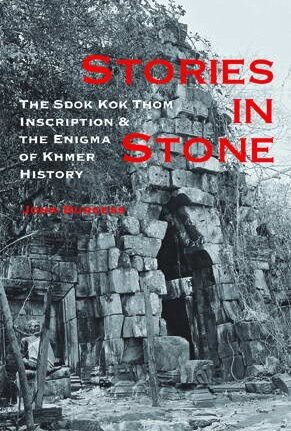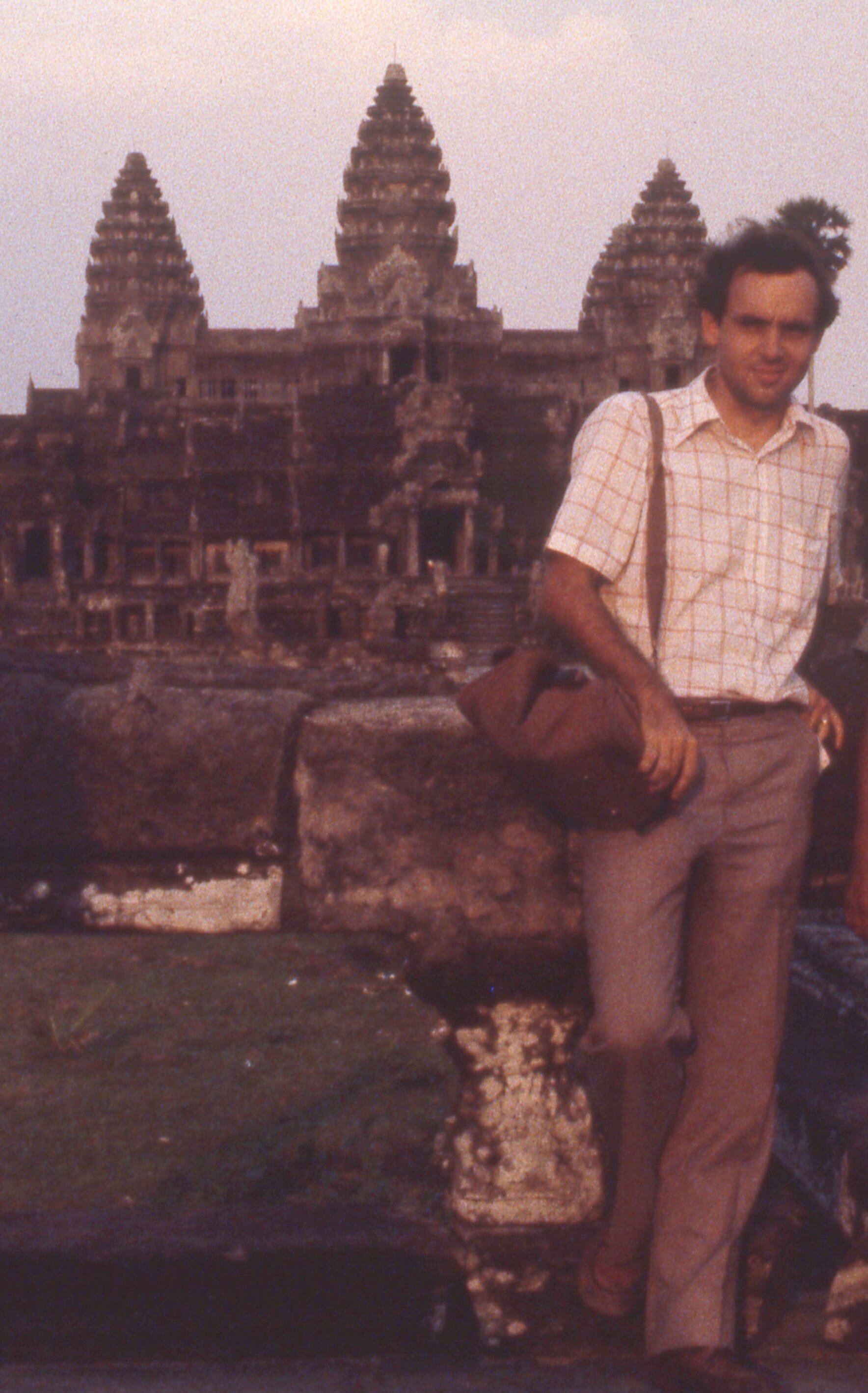Stories in Stone: The Sdok Kok Thom Inscription & the Enigma of Khmer History
by John Burgess
.

Type: paperback
Publisher: River Books
Published: 2011
Author: John Burgess
Pages: 198
ISBN: 978-6167339016
Language : English
ADB Library Catalog ID: PREAHVBURG
The Sdok Kok Thom inscription has been studied by many scholars, being one of the most ancient sample of Old Khmer scripture.
The founding of an empire, the settling of frontier lands, a king’s gifting of gold pitchers and black-eared stallions to a Brahmin priest – these and other remarkable stories come down to us in one of the world’s most important ancient testaments. Recovered at a ruined temple in Thailand close to the Cambodian border, the 340-line chronicle unlocks the early history of the Khmer Empire.
Tags: epigraphy, Sdok Kok Thom, inscriptions, Khmer history
About the Author

John Burgess
John Burgess (1951, North Carolina, USA) is an American writer and former reporter who first visited Cambodia in 1969, in his teen years.
The son of a diplomatic family, he lived in India, Indonesia, and Thailand as a child. A former Washington Post foreign correspondent in Southeast Asia, he is the author of Stories in Stones: The Sdok Kok Thom Inscription and the Enigma of Khmer History, and more recently The Stairway Guide’s Daughter, a work of fiction set in the 12th century at the clifftop temple of Preah Vihear, famous for its 2,400-step stairway.
John Burgess started his association with the print press in 1971 as an editor at The Bangkok World, an English-language newspaper, covering the 1979 exodus of Cambodians from their country following the overthrow of the Khmer Rouge. It was while visiting a refugee camp at the Thai-Cambodian border that he met with his future wife, Karen, then a UN official in charge of support to the displaced populations. In 1980, he was hired by The Washington Post, where he was a staff writer and editor for three decades. That year, he was one of the few foreign correspondants to be allowed in Cambodia, giving a rare account of Angkor immediately after the Vietnamese intervention against Pol Pot’s régime.
From 1984 to 1987, he was the Post’s technology editor in Tokyo, retiring in 2008 and focusing on books and other independent writing.
In his 2021 book Angkor’s Temples in the Modern Era: War, Pride and Tourist Dollars, Burgess studied the political, economic and cultural resonance of Angkor in modern times, from the emergence of Cambodian nationalism to the explosion of mass tourism in the 2000s. On looting and restitution, a topic that has come forefront in the recent years, the author remarked in 2021:
“Theft had been a problem at Angkor basically from the start of the French era — indeed Delaporte’s bringing pieces back to France can be seen, for some of them, as government-sanctioned theft. He had pledged to the local Siamese lord not to take things. When tourism began, all visitors seemed to want a souvenir. To reduce the incentive for pocketing something when the guide wasn’t looking, the French began selling small ancient items that their experts deemed to be of no interest. During the war years, theft reached astounding heights in the general chaos and lawlessness that reigned. It picked up again with the demise of the Khmer Rouge. I was in Angkor in 1980 as a journalist and saw newly beheaded sculptures. The trade continued largely unchecked for years. As a result, most every free-standing piece of sculpture that you see at Angkor now is a replica, because the original disappeared long ago or has been taken to safekeeping storage.” (Interview with The Diplomat, 23 Feb 2021)
- Read a 2021 Khmer Times profile, ‘Angkor By the Book’.
- John Burgess’s website.
John Burgess at Angkor Wat in 1980, when he was a foreign correspondent. [courtesy of the author]

